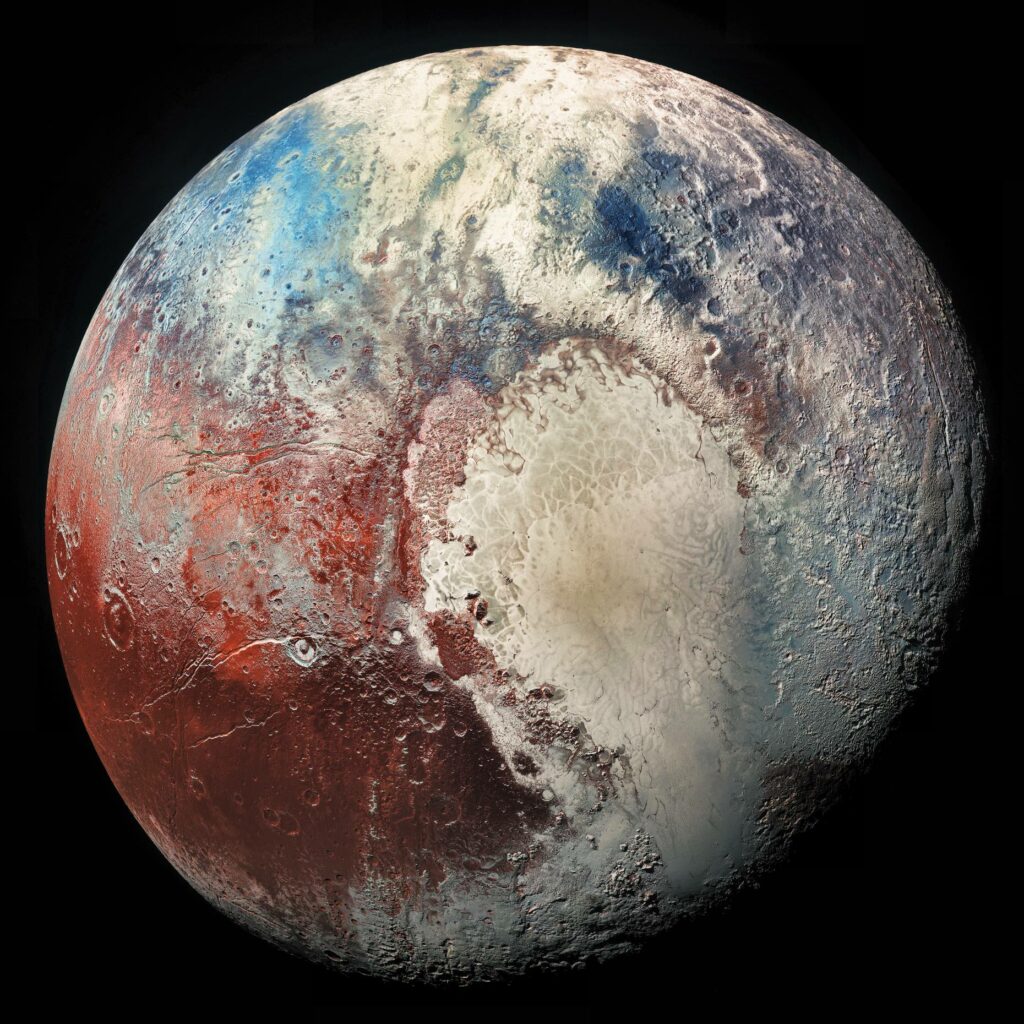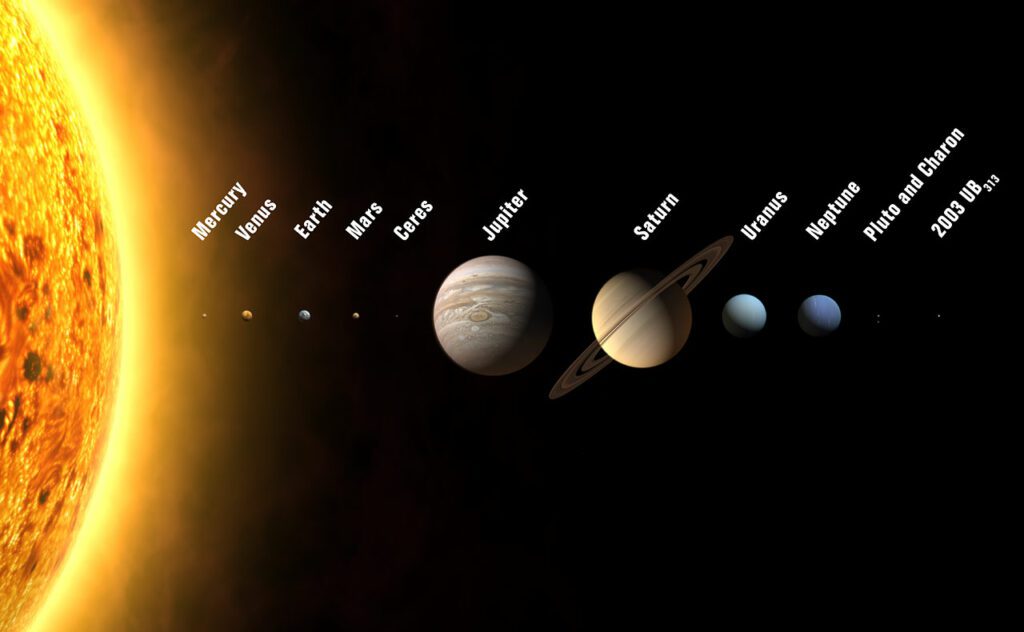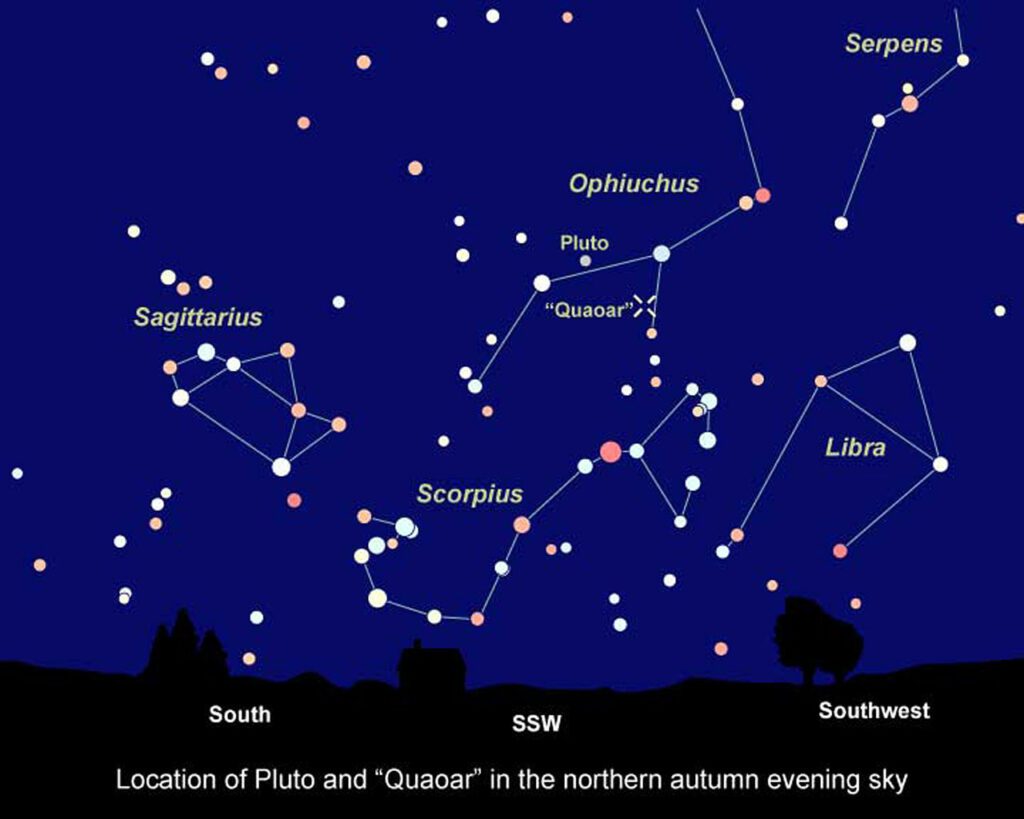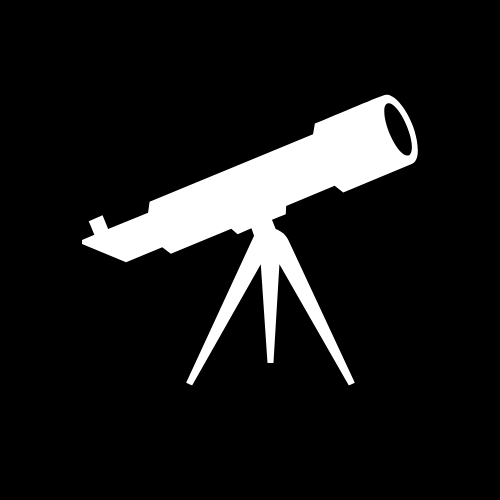Can I see Pluto with a telescope?
Pluto, once considered the ninth planet of our solar system, has always been a subject of fascination and curiosity. Relegated to the status of a dwarf planet in 2006 by the International Astronomical Union, its allure has not diminished. Located at the outer reaches of our solar system, this celestial body remains a challenge for amateur astronomers to spot, despite its historical significance and the intrigue surrounding its reclassification.
For many, the question arises: “Can I see Pluto with a telescope?” The answer is not straightforward. Observing Pluto requires a combination of the right equipment, optimal conditions, and a touch of patience. Unlike the bright planets like Jupiter or Saturn, which are easily visible even with small telescopes or binoculars, Pluto’s distant position and smaller size make it a more elusive target.
In this article, we will delve into the intricacies of observing Pluto, the kind of equipment needed, and tips to enhance your chances of catching a glimpse of this distant dwarf planet. Whether you’re an amateur astronomer or someone who’s just curious about the cosmos, this guide aims to shed light on the enigmatic Pluto and the adventure of spotting it in the night sky.

What is Pluto? A Brief Overview
Pluto, a name synonymous with distant mysteries, has been a subject of astronomical interest for nearly a century. But what exactly is Pluto, and how does it compare to our home planet, Earth?
Pluto’s Classification as a Dwarf Planet:
In the annals of astronomy, Pluto held the title of the ninth planet of our solar system for 76 years. Discovered in 1930 by Clyde Tombaugh, it was celebrated as the outermost planet until 2006. However, in that year, the International Astronomical Union (IAU) introduced a new definition for planets, leading to Pluto’s reclassification as a “dwarf planet.” This decision was based on certain criteria that Pluto did not fulfill, primarily its inability to “clear” its orbit of other debris.
Its Distance from the Earth and the Sun:
Pluto orbits the Sun at an average distance of about 3.67 billion miles (5.91 billion kilometers), making it one of the most distant objects in our solar system. To put this in perspective, Earth orbits the Sun at an average distance of about 93 million miles (149.6 million kilometers). This vast distance is one of the reasons why Pluto is so challenging to observe, even with powerful telescopes.
Size Comparison with Earth:
In terms of size, Pluto is a minuscule world compared to Earth. With a diameter of approximately 1,473 miles (2,370 kilometers), it is about 18% the size of Earth’s diameter. This makes Pluto smaller than our moon, which has a diameter of about 2,159 miles (3,474 kilometers). Its diminutive size, combined with its vast distance from us, contributes to the challenges faced by astronomers and enthusiasts trying to observe it.
In essence, Pluto, with its icy surface, unique orbit, and intriguing history, remains a celestial object of wonder. Its reclassification as a dwarf planet has only added to its mystique, making the quest to observe it all the more enticing for skywatchers around the world.
The Challenge of Observing Pluto
Pluto, despite being a well-known name in our solar system, presents a series of challenges for those wishing to observe it. Its distant location and small size are just the beginning; several factors make Pluto a tricky target even for seasoned astronomers.
Explanation of Pluto’s Visual Magnitude and Its Implications:
In astronomy, an object’s brightness as seen from Earth is described by its visual magnitude. The lower the magnitude number, the brighter the object. For instance, the brightest star in our night sky, Sirius, has a magnitude of -1.46, while the faintest stars visible to the naked eye in perfect conditions are around magnitude 6.
Pluto, on the other hand, has a visual magnitude that hovers around 13.65 to 16.3, depending on its position in its orbit. This makes it over 250 times fainter than the faintest stars we can see without any optical aid! Such a low magnitude means that not only is a telescope necessary to view Pluto, but it also needs to be of a certain caliber, with a large enough aperture to gather sufficient light.
The Need for Specific Conditions Like Low Light Pollution:
Light pollution, the bane of astronomers worldwide, is the excessive or misdirected artificial light produced by urban areas. This artificial brightness washes out the night sky, making it difficult to observe faint celestial objects. Given Pluto’s already faint visual magnitude, observing it from a location with significant light pollution becomes nearly impossible.
For the best chance to spot Pluto, one needs to be in a location far from city lights, where the sky is darkest. Places designated as Dark Sky Parks or Reserves, where artificial light is minimized, offer the best conditions. Additionally, the absence of the moon in the sky (around the new moon phase) can further enhance viewing conditions, as the moon’s brightness can also hinder the observation of faint objects.
Observing Pluto is not a simple task. It requires a combination of the right equipment, optimal viewing conditions, and a good deal of patience. But for those who succeed, the reward is the thrill of spotting one of the most elusive objects in our solar system.

Essential Telescope Features for Observing Pluto
For those eager to catch a glimpse of the distant dwarf planet Pluto, the choice of telescope becomes paramount. Not all telescopes are created equal, and when it comes to observing such a faint and distant object, certain features can make all the difference. Here’s a breakdown of the essential telescope features for observing Pluto:
Importance of Aperture Size:
The aperture of a telescope refers to the diameter of its primary lens (in refractors) or mirror (in reflectors). It determines how much light the telescope can gather. The larger the aperture, the more light it collects, which directly impacts its ability to resolve faint objects in the night sky. For observing Pluto, a telescope with a larger aperture is preferable. An aperture of at least 8 inches (200mm) is recommended, though larger apertures will provide clearer views.
The Role of Magnification:
Magnification, or the ability to enlarge distant objects, is another crucial factor. However, it’s essential to understand that magnification is not the sole key to observing Pluto. While higher magnifications can make Pluto appear larger, they also dim the view, as the gathered light is spread out over a larger area. Therefore, the right balance between aperture and magnification is vital. Typically, a magnification of 150x to 250x, combined with a large aperture, offers a good chance of spotting Pluto.
The Significance of Telescope Mounts:
The mount is the unsung hero of any telescope setup. It holds the telescope steady, allowing for precise adjustments and tracking of celestial objects. There are primarily two types of mounts: Altazimuth (which moves up-down and left-right) and Equatorial (which aligns with Earth’s axis and tracks stars as they move across the sky). For observing Pluto, an equatorial mount is advantageous, especially if it has motorized tracking. This allows the telescope to automatically follow Pluto’s movement, providing a stable view over extended periods.
In conclusion, while the quest to observe Pluto can be challenging, having a telescope with the right features significantly enhances the chances of success. A large aperture to gather ample light, the correct magnification to view the planet clearly, and a sturdy, precise mount are the trifecta for a successful Pluto observation.
Recommended Telescopes for Viewing Pluto
For those passionate about observing the elusive dwarf planet Pluto, having the right telescope is crucial. While many telescopes on the market can provide views of the major planets, spotting Pluto requires a bit more precision and power. Here are some recommended telescopes that are well-suited for the task:
Celestron CPC 1100 XLT: Mid-priced Computerized Telescope
- Overview: The Celestron CPC 1100 XLT is a Schmidt-Cassegrain telescope with an 11-inch aperture, providing ample light-gathering capability.
- Features: Equipped with a computerized altazimuth mount, it offers a database of over 40,000 celestial objects, making it easier to locate Pluto. The NexStar technology ensures smooth tracking.
- Best For: Those looking for a balance between price and performance, with the added convenience of computerized tracking.
Meade LX200-ACF: Premium Telescope for Pluto Observation
- Overview: A high-end choice, the Meade LX200-ACF boasts advanced coma-free (ACF) optics, ensuring sharp images across the field of view.
- Features: With a large 12-inch aperture, it gathers a significant amount of light. The telescope also features a computerized fork mount with the AutoStar II hand controller, simplifying the process of finding Pluto.
- Best For: Serious astronomers willing to invest in top-notch equipment for the best observation experience.
Orion XT12g: Best Value Telescope
- Overview: The Orion XT12g is a Dobsonian reflector telescope that offers a 12-inch aperture at a relatively affordable price.
- Features: It comes with a computerized GoTo system, making it easier to locate and track Pluto. The telescope also offers a wide field of view, ideal for observing other deep-sky objects.
- Best For: Those seeking a balance between cost and performance, especially if keen on exploring other celestial wonders.
Sky-Watcher 10″ Collapsible Dobsonian: Suitable for Beginners
- Overview: This Dobsonian telescope from Sky-Watcher offers a unique collapsible design, making it portable and user-friendly.
- Features: With a 10-inch aperture, it provides good light-gathering capability. The manual altazimuth mount ensures simplicity and ease of use.
- Best For: Beginners and those who prioritize portability without compromising on performance.
Celestron StarSense Explorer 10″ Dobsonian: Lightweight Option
- Overview: This Dobsonian telescope from Celestron is designed for ease of use, especially for those new to astronomy.
- Features: It comes with a 10-inch aperture and the StarSense Explorer app integration, allowing users to align the telescope with the night sky using their smartphone.
- Best For: Novices and those looking for a lightweight, tech-friendly option for stargazing.
Observing Pluto can be a challenge, but having the right telescope can make a significant difference. Whether you’re a seasoned astronomer or just starting, there’s a telescope out there that fits your needs and budget, ensuring a rewarding experience as you gaze upon the distant dwarf planet.
Factors to Consider When Choosing a Telescope
Choosing the right telescope can be a daunting task, especially with the plethora of options available in the market. Whether you’re aiming to observe distant galaxies, nebulae, or the elusive Pluto, certain factors play a pivotal role in ensuring a rewarding stargazing experience. Here’s a breakdown of the key factors to consider when selecting a telescope:
Aperture Size and Its Role in Determining the Clarity of Celestial Bodies:
- Overview: The aperture of a telescope refers to the diameter of its primary lens or mirror. It’s essentially the “eye” of the telescope, determining how much light it can gather.
- Significance: A larger aperture allows the telescope to collect more light, which directly translates to clearer, brighter images of celestial objects. Especially for faint objects like Pluto or distant galaxies, a larger aperture can make a significant difference in the quality of observation.
Magnification Capabilities and Their Impact on Observation:
- Overview: Magnification determines how much larger an object appears compared to its view with the naked eye.
- Significance: While high magnification might seem desirable, it’s essential to understand that it also spreads out the light, which can result in a dimmer view. The key is to find a balance between aperture and magnification. Additionally, the telescope’s maximum useful magnification is typically limited to 50 times its aperture in inches (or 2 times its aperture in millimeters).
The Importance of Mount Type:
- Overview: The mount is the foundation of the telescope, holding it steady and allowing for adjustments to track celestial objects.
- Significance: There are primarily two types of mounts: Altazimuth (simple up-down, left-right movement) and Equatorial (aligned with Earth’s axis for smooth tracking of stars). A stable mount is crucial for clear observations, especially at high magnifications. For objects like Pluto, an equatorial mount with tracking capabilities can be particularly beneficial.
Quality of Optics and Its Effect on Image Quality:
- Overview: The optics of a telescope include its lenses and mirrors, which play a role in focusing the gathered light to form an image.
- Significance: High-quality optics ensure minimal aberrations and a sharper focus, resulting in clearer images. It’s essential to consider the quality of the coatings on the optics, as they can enhance light transmission and reduce reflections.
While the allure of observing celestial wonders is undeniable, the choice of a telescope can significantly influence the quality of the experience. By considering factors like aperture size, magnification, mount type, and optical quality, one can make an informed decision that aligns with their astronomical aspirations and budget.
How to Successfully Spot Pluto in the Night Sky

Pluto, being one of the most distant and faintest objects in our solar system, requires a bit of strategy and preparation to observe successfully. While having the right telescope is essential, knowing when and how to look can make all the difference. Here’s a guide on how to enhance your chances of spotting this elusive dwarf planet:
The Importance of Timing and Planning:
- Overview: Pluto’s visibility changes throughout the year based on its position relative to Earth and the Sun.
- Significance: To maximize your chances of spotting Pluto, it’s crucial to observe it when it’s at opposition, meaning it’s directly opposite the Sun from Earth’s perspective. During this time, Pluto is at its brightest and rises as the Sun sets, remaining visible throughout the night. Planning your observation sessions around this time can significantly increase your chances of success.
Tracking Pluto Using Computerized Mounts or Manual Tracking:
- Overview: Given Pluto’s faintness, keeping it in the field of view can be challenging, especially at higher magnifications.
- Significance: Computerized “GoTo” mounts can automatically locate and track Pluto, making the observation process smoother. If you’re using a manual mount, it’s essential to familiarize yourself with its movement and regularly adjust it to keep Pluto in view. Remember, Pluto will appear as a faint dot, so tracking it accurately is crucial to maintain a clear view.
Using Star Charts for Confirmation:
- Overview: Due to its faintness, Pluto can easily be mistaken for a background star. Using a star chart can help confirm that you’re indeed observing Pluto.
- Significance: Star charts display the positions of celestial objects at specific times and dates. By comparing the position of the faint dot you believe to be Pluto with a star chart, you can confirm your observation. Several apps and software tools can generate real-time star charts, making it easier to match and verify your findings.
Observing Pluto can be a test of patience and precision, but the thrill of successfully spotting it is unparalleled. By planning your sessions, using the right tracking methods, and employing star charts for confirmation, you can join the ranks of those who’ve gazed upon this distant celestial wonder.
Conclusion
The quest to observe Pluto, the distant dwarf planet that has captured the imaginations of many, is both a challenge and a reward in the world of amateur astronomy. Its elusive nature, combined with its faintness against the vast backdrop of the cosmos, makes it a sought-after target for those looking to test their observational skills.
While the challenges are undeniable, from the need for precise equipment to the intricacies of tracking such a faint object, the rewards are equally compelling. Successfully spotting Pluto is not just about adding another celestial object to one’s list but about the journey of preparation, patience, and the thrill of discovery. It’s a testament to the wonders of the universe and the capabilities of ground-based observation.
To all amateur astronomers, both seasoned and new, the call to observe Pluto is an invitation to push boundaries, to learn, and to experience the joy of stargazing at its finest. So, gear up, look to the skies, and embark on this astronomical adventure. The universe, with all its mysteries, awaits your gaze.
FAQ: Observing Pluto with a Telescope
Q1: Why is Pluto so hard to see with a telescope?
A: Pluto is challenging to observe primarily because of its distance from Earth and its small size. Additionally, its visual magnitude is quite faint, making it harder to distinguish from background stars, especially in areas with light pollution.
Q2: Can I see Pluto with a basic beginner’s telescope?
A: While it’s possible to spot Pluto with a beginner’s telescope, it would appear as a very faint dot and might be hard to distinguish from stars. A telescope with a larger aperture and higher magnification would provide a clearer view.
Q3: What’s the best time of year to observe Pluto?
A: The optimal time to observe Pluto is when it’s at opposition, meaning it’s directly opposite the Sun from Earth’s perspective. During this time, Pluto is at its brightest and is visible throughout the night.
Q4: Will Pluto appear as clear as images from space missions?
A: No, through a telescope, Pluto will appear as a faint dot. The detailed images of Pluto we see from space missions, like those from the New Horizons probe, are captured using advanced technology and are not representative of what one would see through a backyard telescope.
Q5: How can I confirm that I’m observing Pluto and not a star?
A: Using a star chart or an astronomy app can help. By comparing the position of the faint dot you believe to be Pluto with the chart or app, you can confirm your observation. Remember, Pluto’s position changes slightly each night, so ensure your reference is up-to-date.
Q6: Is light pollution a significant factor when trying to observe Pluto?
A: Yes, light pollution can significantly hinder the observation of faint objects like Pluto. It’s recommended to observe from a location with minimal light pollution, such as rural areas or designated dark sky sites.
Q7: Can binoculars be used to observe Pluto?
A: While high-powered binoculars might allow you to spot Pluto under optimal conditions, a telescope would provide a clearer and more detailed view.
Q8: Does Pluto’s reclassification as a dwarf planet affect its visibility?
A: No, Pluto’s classification as a dwarf planet is based on astronomical criteria and does not impact its visibility or brightness in the night sky.
In conclusion, observing Pluto is a rewarding challenge for any astronomy enthusiast. With the right equipment, knowledge, and a bit of patience, you can spot this distant celestial body and experience the thrill of discovery.


